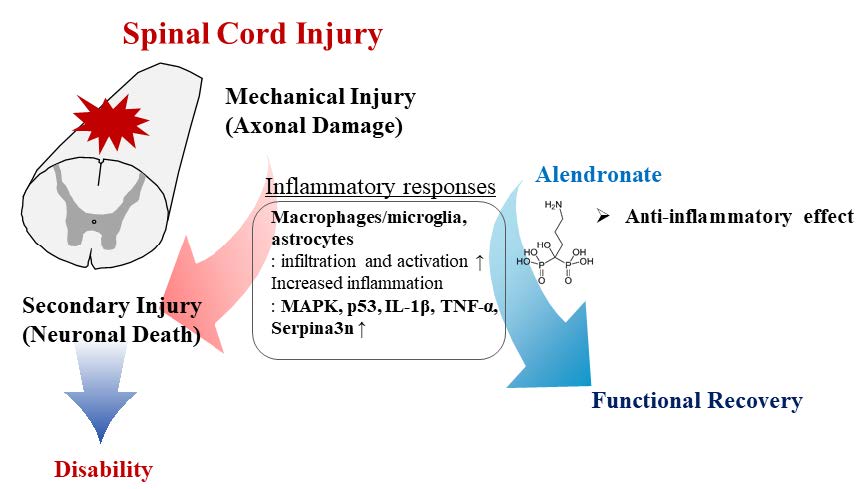Articles
Article Tools
Stats or Metrics
Article
Original Article
Exp Neurobiol 2022; 31(1): 54-64
Published online February 28, 2022
https://doi.org/10.5607/en21030
© The Korean Society for Brain and Neural Sciences
Alendronate Enhances Functional Recovery after Spinal Cord Injury
Yuna Choi* and Taekyun Shin*
Department of Veterinary Anatomy, College of Veterinary Medicine and Veterinary Medical Research Institute, Jeju National University, Jeju 63243, Korea
Correspondence to: *To whom correspondence should be addressed.
Taekyun Shin, TEL: 82-64-754-3363, FAX: 82-64-756-3354
e-mail: shint@jejunu.ac.kr
Yuna Choi, TEL: 82-64-754-3363, FAX: 82-64-756-3354
e-mail: cyn323@jejunu.ac.kr
This is an Open Access article distributed under the terms of the Creative Commons Attribution Non-Commercial License (http://creativecommons.org/licenses/by-nc/4.0) which permits unrestricted non-commercial use, distribution, and reproduction in any medium, provided the original work is properly cited.
Abstract
Spinal cord injury is a destructive disease characterized by motor/sensory dysfunction and severe inflammation. Alendronate is an anti-inflammatory molecule and may therefore be of benefit in the treatment of the inflammation associated with spinal cord injury. This study aimed to evaluate whether alendronate attenuates motor/sensory dysfunction and the inflammatory response in a thoracic spinal cord clip injury model. Alendronate was intraperitoneally administered at 1 mg/kg/day or 5 mg/kg/day from day (D) 0 to 28 post-injury (PI). The histopathological evaluation showed an alleviation of the inflammatory response, including the infiltration of inflammatory cells, and a decrease in gliosis. Alendronate also led to reductions in the levels of inflammation-related molecules, including mitogen-activated protein kinase, p53, pro-inflammatory cytokines, and pro-inflammatory mediators. Neuro-behavioral assessments, including the Basso, Beattie, and Bresnahan scale for locomotor function, the von Frey filament test, the hot plate test, and the cold stimulation test for sensory function, and the horizontal ladder test for sensorimotor function improved significantly in the alendronate-treated group at D28PI. Taken together, these results suggest that alendronate treatment can inhibit the inflammatory response in spinal cord injury thus improving functional responses.
Graphical Abstract

Keywords: Alendronate, Behavioral test, Gliosis, Inflammation, Spinal cord injury


